
Four Major Types of Organic Reactions
Virtually all organic reactions fall into one of four categories: substitutions, additions, eliminations, or rearrangements. Substitution Reactions Substitutions are the characteristic reactions of saturated compounds such as alkanes and alkyl halides and of aromatic compounds (even though they are unsaturated). In a substitution, one group replaces another. For example, chloromethane reacts with sodium hydroxide to produce methyl […]
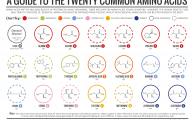
A Brief Introduction of Amino Acids – The Building Blocks of Proteins
Amino acids are an important group of compounds that all contain the amino group (-NH2) and carboxylic acid group (-COOH). One type of amino acid has the -NH2 group bonded to the C atom next to -COOH group. These 2-amino-carboxylic acids are the building blocks that make up proteins. The general structural formula of 2-amino-carboxylic […]
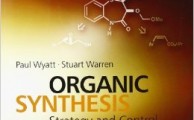
Organic Synthesis: Strategy and Control
Free download Organic Synthesis: Strategy and Control is written by Paul Wyatt (Senior Lecturer and Director of Undergraduate Studies, School of Chemistry, University of Bristol, UK) and Stuart Warren (Reader in Organic Chemistry, Department of Chemistry, University of Cambridge, UK) and published by John Wiley and Sons Ltd. in 2007. The book is intended for that […]
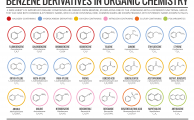
Simple Benzene Derivatives and Their Nomenclature in Organic Chemistry
Benzene is an organic chemical compound with the molecular formula C₆H₆. Its molecule is composed of 6 carbon atoms joined in a ring, with 1 hydrogen atom attached to each carbon atom. Benzene was prepared from coal tar by August W. von Hofmann in 1845. Coal tar remained the primary source for the industrial production of benzene […]
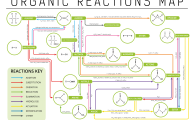
Types of Organic Reactions – Functional Groups Interconversion
Most molecules are at peace with themselves. Bottles of water, or acetone (propanone, Me2C=O), or methyl iodide (iodomethane CH3I) can be stored for years without any change in the chemical composition of the molecules inside. Yet when we add chemical reagents, say, HCl to water, sodium cyanide (NaCN) to acetone, or sodium hydroxide to methyl iodide, chemical reactions […]
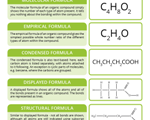
Types of Organic Chemistry Formulae [Infographic]
A guide to the different ways Organic Compounds can be represented in chemistry. Types of Organic Chemistry Formulae discussed in this infographic are: Molecular Formula The molecular formula of an organic compound simply shows the number of each type of atom present. It tells you nothing about the bonding within the compound. Empirical Formula The […]
![Simple Heterocycles in Organic Chemistry [Infographic]](https://chemistry.com.pk/wp-content/uploads/2014/08/Organic-Chemistry-Heterocycles.png)
Simple Heterocycles in Organic Chemistry [Infographic]
A Heterocycle in organic chemistry is a ring of connected atoms, where one or more atoms in ring are elements different from carbon. Heterocycles with Oxygen, Nitrogen and Sulfur are the most prevalent; Selenium, Boron, Arsenic and Phosphorus can also be incorporated. In below infographic heterocycles includes: Ethylene Oxide, Tetrahydrofuran, Furan, Tetrahydropyran, 4H-Pyran, 1,4-Dioxane, Ethylene […]